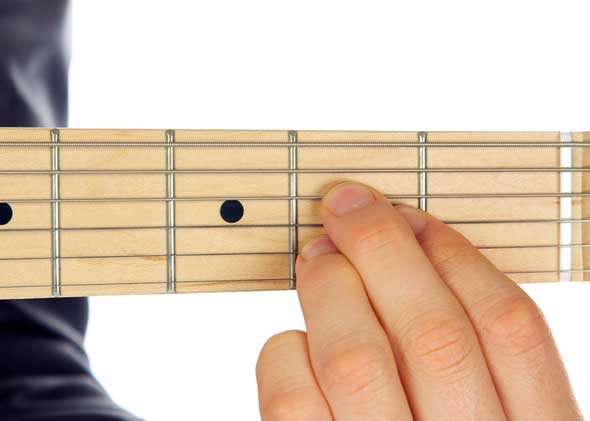
Slide Finger
When changing between G to D7, do not lift your third finger off the first string, but slide it down to the second fret. Only touch the third string very lightly as you do this. The use of the slide will make changing between G and D7 chords easier. Then play the following 8 bar chord progression using the two bar rhythm pattern as shown. Don't forget to use the pivot finger between the C and D7 chords.
Rhythm Pattern



Tip: When strumming, only your wrist should move. Do not move your arm and keep your forearm resting on the upper edge of the guitar. Remember to keep your left hand fingers just behind the fret. If you place it on top of the fret, the note will sound deadened. If you place it too far back from the fret the note will buzz and you will have to press down harder to prevent it. Pick the string over the sound hole as this results in the best sound.
A Major Chord



To play the A chord, place the first, second and third fingers of your left hand as shown in the diagram. Strum all six strings.
Rhythm Pattern

When changing between C and A use your second finger as a pivot.

E Major Chord



To play the E chord, place the first, second and third fingers of your left hand as shown in the diagram. Strum all six strings.
Rhythm Pattern

In the following progression use a slide finger on the third string when changing between the D and E chords. Use the first finger as a pivot finger on the third string when changing between the A and D chords.
When a bar has no chord noted at the beginning you repeat the chord in the previous bar.
To make the progression sound complete finish with one strum of a D chord.

